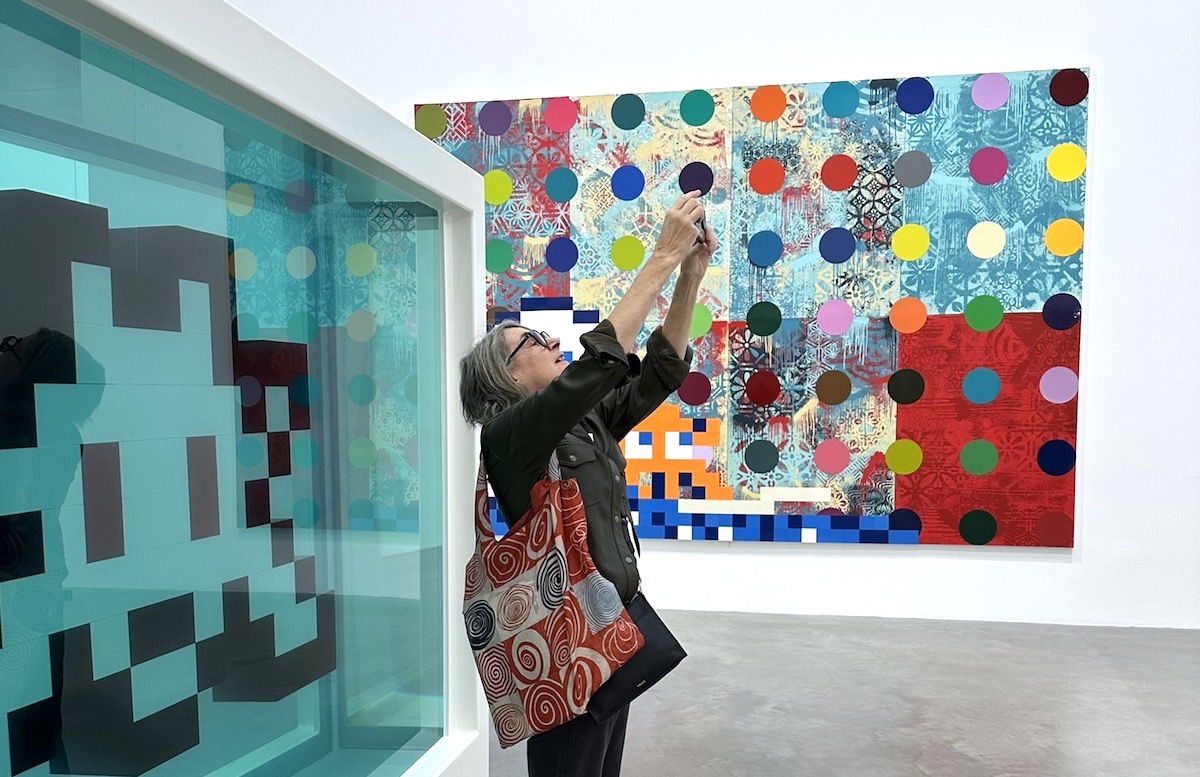A man has pleaded guilty to the burglary of artwork by Damien Hirst at his Thames Wharf Studio, the artist’s long-standing workspace on the riverside in west London.
Liam Middleton-Gomm, 36, admitted to breaking into the property on 30 June, stealing approximately £5,000 worth of items. Some of the stolen goods were later traced to his father’s address. Middleton-Gomm entered two pleas of guilty to burglary during a hearing at Kingston Crown Court on Friday.
His father, Leslie Gomm, 62, also admitted to handling stolen goods between 29th June and 8th July. Court records revealed an extensive criminal history, with 110 prior offences—72 related to theft or similar crimes. He initially denied any connection to the stolen items, claiming they had been purchased at a car boot sale, but later conceded his involvement.
Hirst’s rise from Goldsmiths student to global figurehead of the Young British Artists (YBAs) remains a defining narrative of late 20th-century British art. His 1988 exhibition Freeze marked the emergence of a generation that married entrepreneurial swagger with anti-establishment energy, reshaping the idea of what a contemporary artist could be.
Over the decades, Hirst’s output has swung between the clinical and the devotional. The Pharmaceutical Paintings (1986–2011), with their evenly spaced coloured circles, explore the aesthetic seduction of medicine; the Visual Candy series of the 1990s parodied euphoric consumer optimism. Meanwhile, the glass vitrines housing dead animals—sheep, cows, and the now-iconic tiger shark—remain symbols of both spectacle and confrontation, probing what it means to look at death made permanent.
His later works continued to test art’s moral and material boundaries. The diamond-encrusted skull For the Love of God (2007) crystallised the contradictions at the centre of Hirst’s practice: value, vanity, and the desire to outlast decay. In 2015, he opened the Newport Street Gallery in Vauxhall, a space dedicated to displaying his private collection, effectively transforming his role as an artist into that of a patron and gatekeeper.
The Thames Wharf incident may prove an incidental story in the larger arc of his career. Yet the theft from a studio synonymous with creation and control is laced with irony. In Hirst’s world, where art and life mirror each other in cycles of replication and loss, even crime finds its conceptual echo.
Hirst’s latest show, Triple Trouble, is an exhibition that brings together three of contemporary art’s most provocative figures — Shepard Fairey, Damien Hirst, and Invader. The show, presented in association with HENI, is curated by Connor Hirst (Damien’s son) and marks the first time the trio have worked collectively and collaboratively on such a scale.
Across all six gallery spaces, Triple Trouble stages a collision between fine art, street culture and pop iconography. Fairey, Hirst and Invader — artists from distinct traditions but united by an appetite for risk — have created new works that merge their visual vocabularies in unexpected ways. Painting, sculpture, installation and mosaic are all reimagined through their shared fascination with repetition, symbolism and the visual grammar of mass culture.
Visitors can expect familiar motifs, but reconfigured with a mischievous charge. Hirst’s immaculate spot paintings and pill cabinets intersect with Fairey’s politically edged graphics and Invader’s pixel mosaics. Spin paintings are overlaid with OBEY imagery; Rubik’s Cube mosaics expand into monumental panels; tanks and vitrives are transformed through acts of visual sabotage. A new site-specific mural — part intervention, part takeover — transforms the gallery itself into a hybrid between a white cube and an urban wall.
Admission Free.

